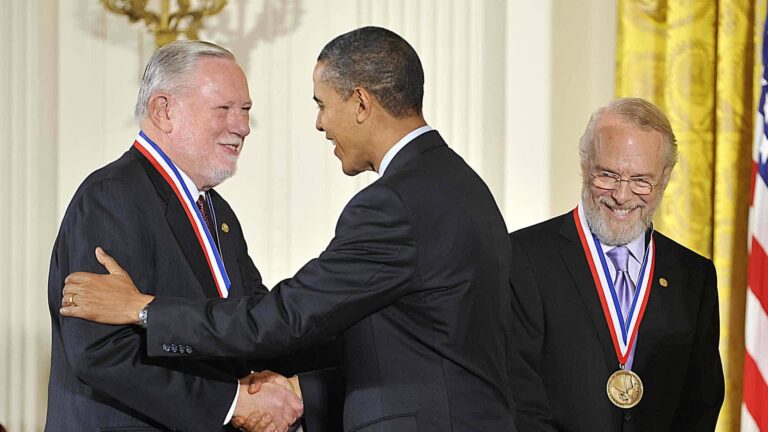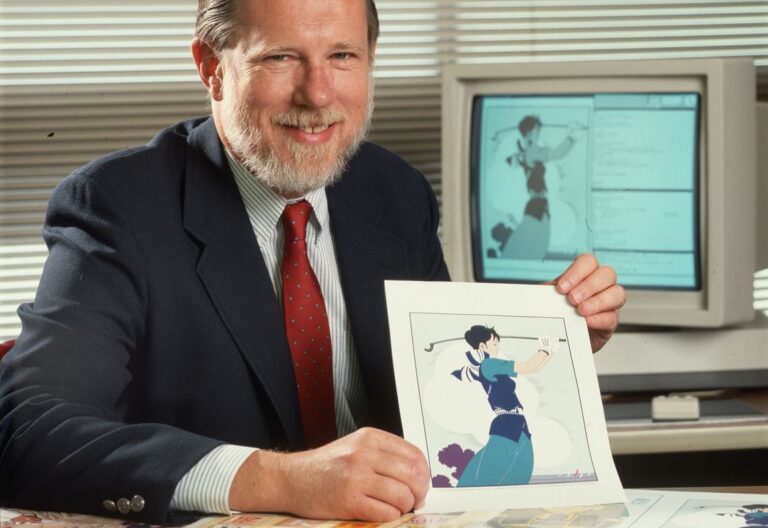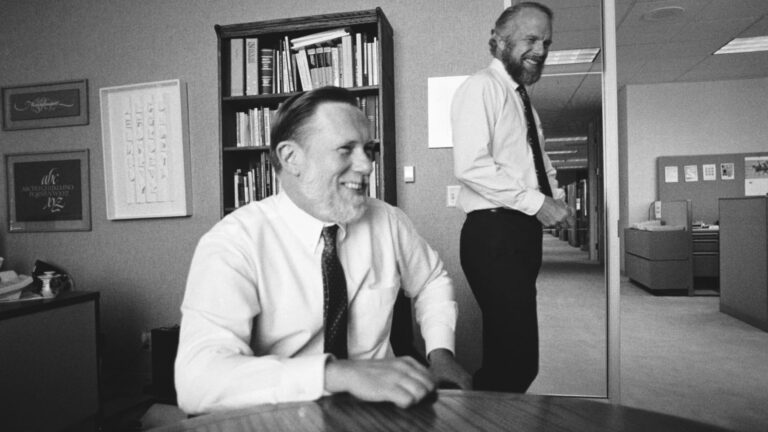Chuck Geschke, the innovator who impacted my leadership philosophy
Charles “Chuck” Geschke died last Friday at his home in Los Altos, California. He was 81. Even if you were not familiar with Dr. Geschke, I’m sure you know Adobe, the company he co-founded with Dr. John Warnock. I’ve been lucky to work with these two inspirational leaders during a good part of my eleven years at Adobe.
Chuck is probably the executive who influenced me the most and helped me develop my leadership philosophy. One incident, in particular, left a profound impression on a fundamental value that still sticks with me, almost thirty years later. Here are a few of the life and leadership lessons I learned from Chuck Geschke:
Nothing is static. You can invent the future.

“We’ll never succeed unless we continue to open up new vistas.” Chuck Geschke – 2008
Chuck Geschke and John Warnock founded Adobe in 1982. They could not imagine they would someday receive the National Medal of Technology from the very hands of President Barack Obama. But they did! Twenty-seven years later. After almost three decades of continuous invention, Adobe had become a major tech player.
Earlier, the duo had spent years at Xerox Park, researching graphics and image processing areas. Together, they developed a promising page description language (PDL), but their management wasn’t into a bold implementation of the idea. So, the two left Xerox to start their own company, Adobe. Their first product was Adobe PostScript, an innovative computing language sold to printer manufacturers. PostScript provided a radical new way to print text and images on paper. It also sparked the desktop publishing revolution, transforming the whole professional printing and publishing industry in just a few years. Soon, Adobe diversified into more applications. I’m sure you know most of them by name. Some even became a “verb” like Photoshop.
In my opinion, the most transformative invention Chuck and John enabled remains Acrobat PDF (Portable Document Format). I participated in the European launch of Acrobat in June 1993 in London. We didn’t know it yet, but we had pure gold in our hands. Acrobat would soon become the absolute reference for universal rich documents you can share on any device, any platform.
Innovation involves disruption and patience.

Chuck knew how to leverage opportunities. He practiced it during the early days at Adobe. The company had successfully developed its PostScript language. It soon became apparent that PostScript had a unique way of handling typefaces. The only caveat was that the leaders in the typeface industry were very traditional and entrenched. As Chuck and the Adobe team kept hearing “no” from the typeface industry leaders, they soon became experts in going to their hungry competitors. They secured great deals and eventually disrupted the whole category.
When we launched the first version of Acrobat in 1993, we had a particular niche market in mind. We thought it would primarily benefit professional publishers and their clients as digital proof before going to press. We even sold the PDF Reader for $50! Understandably, initial sales were slow, and the technology was not going anywhere. Acrobat was probably out in the market three years too soon. But then the Internet took off. After much debate, Chuck and John decided we would distribute the PDF reader for free. With the emergence of the Web, PDF became mainstream and turned into the standard to distribute rich electronic documents. It didn’t contribute much to the financial bottom line at first. Some teams in charge of the high-revenue applications and systems even highly criticized why we’d keep such a money–losing solution. But the perseverance and continued investment eventually paid off, and Acrobat is now a key contributor to the $15B revenue Adobe expects in 2021.
Solid instincts beat the business theory.

In a fascinating interview with the Wharton School, Chuck gave a brilliant answer when asked about why Adobe continued to invest in Acrobat for so long:
“Your own instincts. You can’t analyze a market that has never existed”.
Instinct was a crucial part of the equation for Chuck. He and John saw the digital world coming. It started with desktop publishing and then expanded into imagery, video, and any form of rich content. Most interestingly, Chuck and John were not big on business literature. In that same interview with Wharton School, Chuck admitted he had only read one business book as of 2008. And the only chapter he remembered from it was entitled “Market Gap Analysis.”
“The one idea I remember was that it is easier to build a business if you find a new solution to an already perceived problem that no one has come out with before — because you instantly are [at] 100% market share”.
It’s an excellent summary of what Adobe was able to accomplish under Chuck and John’s leadership: be the first to create solutions to well-identified problems. Educated instinct was the way to progress in uncharted territories.
A few key principles and values

At one point, Chuck and John expressed more specifically the core values that led them to create Adobe and what kept them excited to come to work every day. One memo Chuck sent internally in 1998 summarized most of these. In it, Chuck refers a lot to leadership values. The one that stood out for me is the need to juggle all of the constituencies with interest in the business – shareholders, customers, employees, vendors, communities – and the unavoidable conflicts that come with it. He was years ahead of the stakeholder capitalism when he stated:
“The job of a leader is to juggle these conflicting interests without letting any of them dominate the others because they’ll drag your company down.”
On a personal note, I experienced the truly open mind that characterized Chuck. It was back in early 1994. I had met Chuck only once at that time, but he already knew who I was and what was driving me. We had just announced our intent to acquire one of our competitors, Aldus. I was then in charge of the Iberica market, in my twenties, and probably way too excited by the acquisition prospect. I regularly talked to the Spanish press and shared more than I should have about future plans. My enthusiasm endangered the deal at a critical juncture and slowed the negotiations. Many executives would have used the opportunity to fire me. Chuck didn’t. He backed me up, believed in my potential, and trusted I wouldn’t make the same mistake again. By doing so, he and Adobe got the best out of me for the next ten years. At some point, everyone in your team will fail, what makes the difference is how you, as a leader, react to it and help them learn and rebound.
In closing...
One should not underestimate Chuck’s legacy to Adobe and the world. Chuck and John initiated and paved the way for more industry transformations and disruptions. Chuck is a true inspiration for any leader and I know that spirit is alive at Adobe. The company proved many times again how it could reinvent itself. And it works – Adobe is now worth 25 times what it was back in 2000 when Chuck retired.
As importantly, Chuck was a leader with values that truly promote innovation, the right to fail, and the instinct to get it right. I’m deeply thankful for the adventure with Chuck, John, and so many of my Adobe friends for life. Once you catch it, the innovative spirit never dies.
